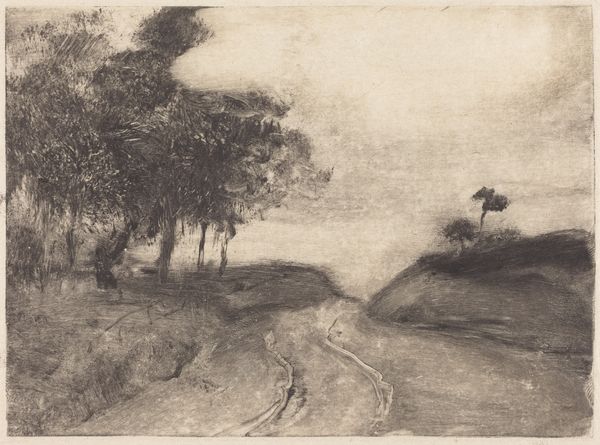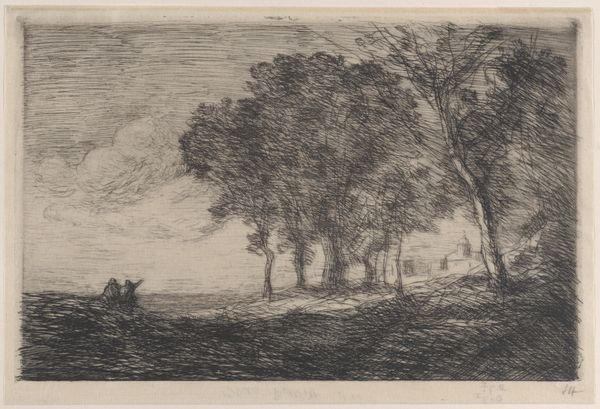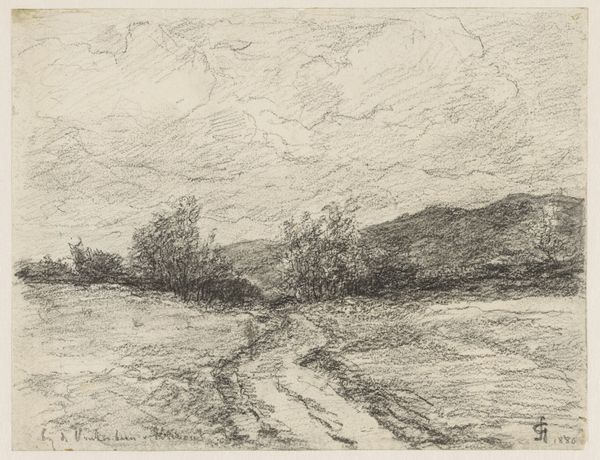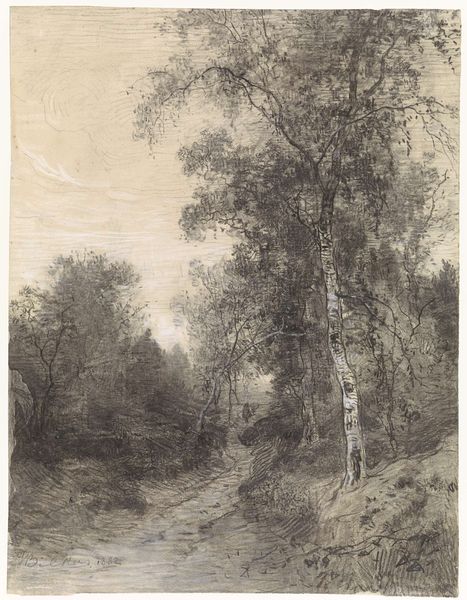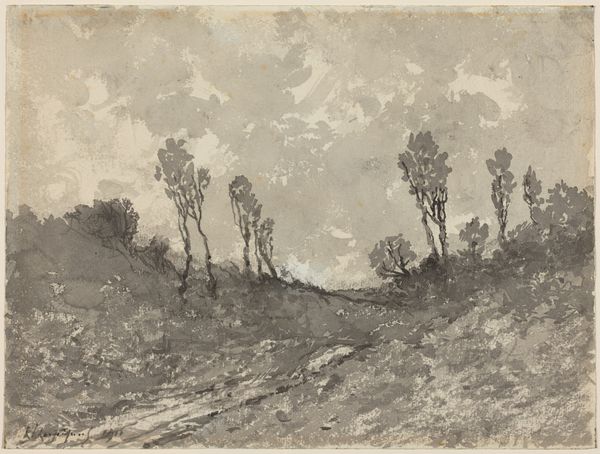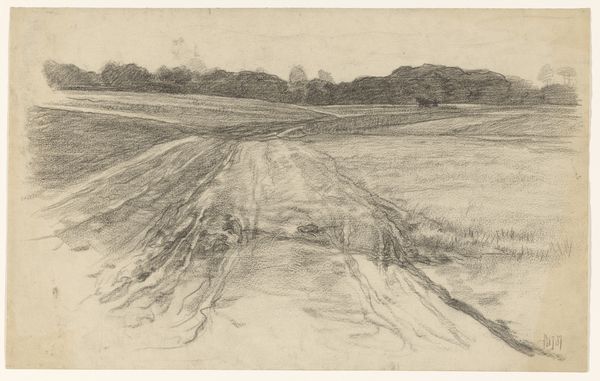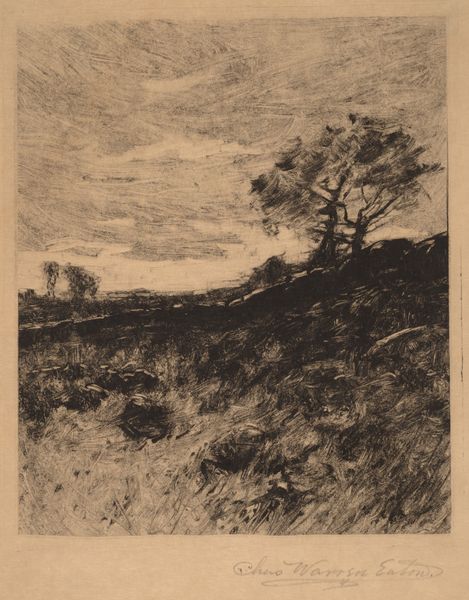
drawing, pencil
#
drawing
#
landscape
#
pencil drawing
#
romanticism
#
pencil
Dimensions: 267 mm (height) x 413 mm (width) (bladmaal)
Curator: I'm immediately struck by the almost melancholic tone, despite the seemingly simple subject matter of this landscape. The restricted tonal range makes it quite dramatic. Editor: Indeed. Here we have "Landscape with Trees," a pencil drawing likely created between 1743 and 1843, attributed to Georges Michel. It resides here at the SMK, the National Gallery of Denmark. But before we delve further, what catches your eye in terms of materiality? Curator: Well, the overt use of pencil and the overt depiction of labor, I'd say! Pencil as a medium often downplayed relative to painting. Yet, Michel elevates it here to create something evocative. Note the visible texture of the paper and how Michel uses varied pressure to achieve depth. It makes me wonder about the availability and social perception of materials in art production. Was this artist embracing readily accessible tools or deliberately choosing humbler means? Editor: Interesting question. I think situating Michel and his landscapes historically helps illuminate that point. His works gain prominence amidst industrial shifts—pencil as an increasingly common commodity versus painting and sculpture linked to older patronage structures. The democratisation of tools affects what’s possible artistically. And consider Romanticism as a wider European phenomenon too. Think how national institutions started to be formed. Think what those art pieces meant for emerging European ideas of nation. Curator: True, placing the work within its sociopolitical context illuminates so much. This wasn’t just a rendering of the physical landscape. It participated in creating ideas about "nation," about Danish identity. What's your take on how Michel positions this drawing? Is this for private study or public consumption, do you think? Editor: I suspect, perhaps aspirationally, that it leaned towards public visibility given the museum's presence here in Copenhagen. Landscape art rose sharply at the time as an overt instrument for creating emotional bonds for citizens and the physical environments newly coming under centralized state administration. So an exhibition venue absolutely frames reception. Curator: Absolutely. Knowing it now lives within this very institution certainly impacts our perception. What initially struck me as a quiet, almost personal study gains added complexity and layers of contextual resonance. The material realities of pencil become connected to the cultural weight of nation-building. Editor: Precisely. It prompts me to see landscape less as passive scenery and more as an active political instrument. So thank you to both this artwork and you for broadening our outlook here. Curator: Likewise. I came here with my materials focus and leave understanding more the role those things may have served within a much broader political machine. A great and interesting outcome.
Comments
No comments
Be the first to comment and join the conversation on the ultimate creative platform.
